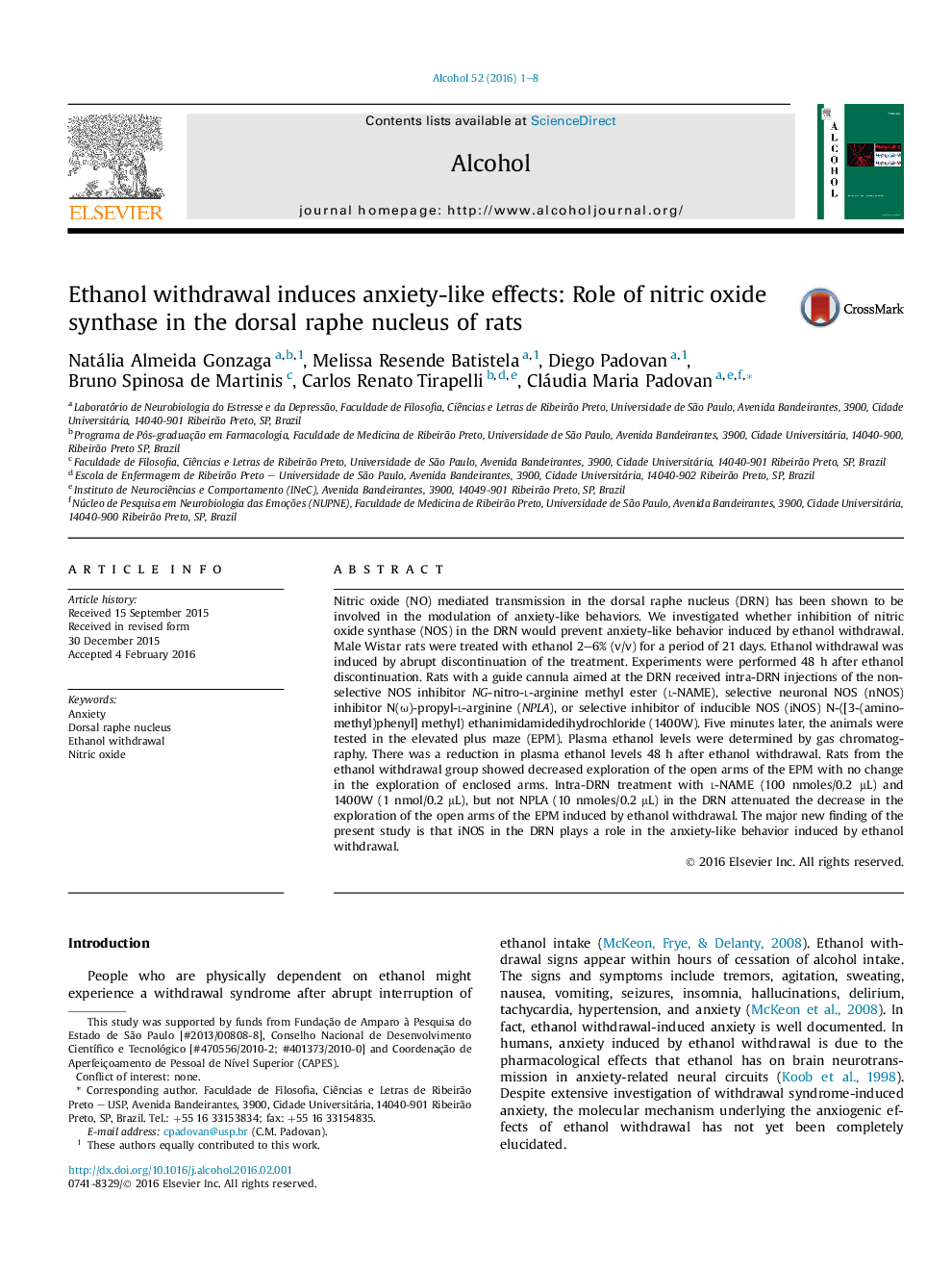| Article ID | Journal | Published Year | Pages | File Type |
|---|---|---|---|---|
| 1066823 | Alcohol | 2016 | 8 Pages |
•In the dorsal raphe nucleus (DRN) nitric oxide is involved in anxiety-like behavior.•Anxiogenic effects are observed in the elevated plus maze after ethanol withdrawal.•Ethanol withdrawal was attenuated after blockade of iNOS, but not nNOS, in the DRN.
Nitric oxide (NO) mediated transmission in the dorsal raphe nucleus (DRN) has been shown to be involved in the modulation of anxiety-like behaviors. We investigated whether inhibition of nitric oxide synthase (NOS) in the DRN would prevent anxiety-like behavior induced by ethanol withdrawal. Male Wistar rats were treated with ethanol 2–6% (v/v) for a period of 21 days. Ethanol withdrawal was induced by abrupt discontinuation of the treatment. Experiments were performed 48 h after ethanol discontinuation. Rats with a guide cannula aimed at the DRN received intra-DRN injections of the non-selective NOS inhibitor NG-nitro-l-arginine methyl ester (l-NAME), selective neuronal NOS (nNOS) inhibitor N(ω)-propyl-l-arginine (NPLA), or selective inhibitor of inducible NOS (iNOS) N-([3-(aminomethyl)phenyl] methyl) ethanimidamidedihydrochloride (1400W). Five minutes later, the animals were tested in the elevated plus maze (EPM). Plasma ethanol levels were determined by gas chromatography. There was a reduction in plasma ethanol levels 48 h after ethanol withdrawal. Rats from the ethanol withdrawal group showed decreased exploration of the open arms of the EPM with no change in the exploration of enclosed arms. Intra-DRN treatment with l-NAME (100 nmoles/0.2 μL) and 1400W (1 nmol/0.2 μL), but not NPLA (10 nmoles/0.2 μL) in the DRN attenuated the decrease in the exploration of the open arms of the EPM induced by ethanol withdrawal. The major new finding of the present study is that iNOS in the DRN plays a role in the anxiety-like behavior induced by ethanol withdrawal.
